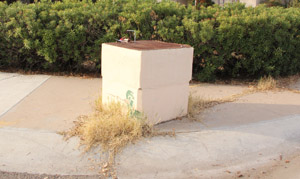Rising temperatures in Phoenix also bring another unpleasant rise: the number of ticks in your yard, on the trails, and in local parks.
Arizona’s most prevalent pest of this nature is the brown dog tick—it jumps on the dog, feeds for a time, then jumps off to molt and grow larger in the crack or crevice of your home or nearby structure. Then it starts the cycle all over again.
Outdoors, a brown dog tick crawls up on grasses, shrubs and other vegetation, then attaches itself to a passing host. Brown dog ticks do not confine themselves to dogs but will also attach themselves to many other animals and people. On dogs, adult ticks are typically found on the ears and between the toes, while immature ticks feed along the dog’s back.
After feeding, a female drops off the dog and crawls into a hiding place where she may lay as many as 5,000 eggs. Brown dog ticks survive best indoors and prefers warm, dry conditions.
The brown dog tick is significant because it is known to transmit diseases to humans, including Rocky Mountain Spotted Fever, Canine Babesiosus and Canine Ehrlichiosis.
To remove a brown dog tick, use fine-tipped tweezers to grasp it as close to the skin’s surface as possible. Pull upward with a steady, even pressure. Don’t twist or jerk the tick as this can cause the mouth parts to break off and remain in the skin. Place it in a sealed bag or container; submerse the tick in alcohol; or wrap it tightly in tape. Clean the bite area with soap and water.
You should consider saving the tick in a sealed jar. If you or your pet develops any symptoms after the bite, the tick can be tested for disease.










































